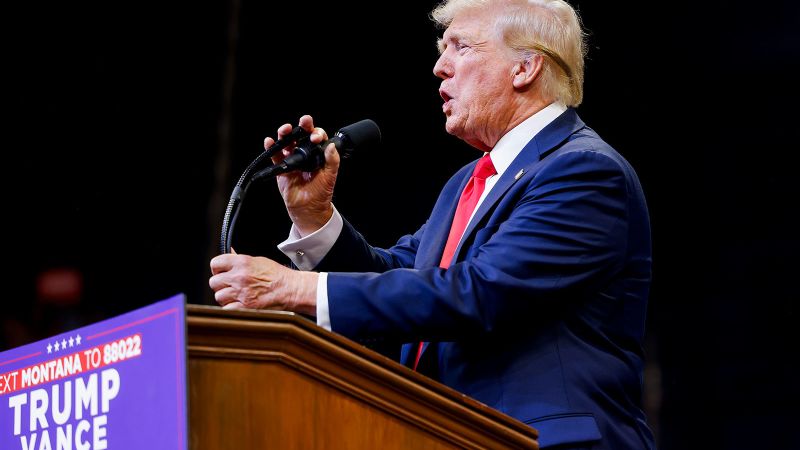In a recent press conference, former President Trump faced criticism for his disjointed and chaotic speech, with many describing it as a “dumpster fire.” Despite this, reporter Marc Caputo predicts that Trump’s future press conferences will likely follow a similar pattern. Caputo highlights the Trump campaign’s efforts to keep the former president on message, but he suggests that Trump’s impulsive nature may make it challenging for them to control the narrative. Caputo’s analysis indicates that Trump’s unorthodox communication style may continue to create challenges for his team as they attempt to shape his public image.
Caputo notes that Trump’s unpredictable behavior and tendency to veer off-script could pose a significant challenge for his campaign team. While they may attempt to implement strategies to keep him on message, Trump’s impulsive nature may ultimately undermine their efforts. Despite the negative feedback from the recent press conference, Caputo predicts that Trump’s future public appearances may continue to be characterized by a lack of coherence and consistency. This could potentially create difficulties for the campaign as they try to maintain a clear and focused communication strategy.
Caputo also sheds light on the internal dynamics within the Trump campaign, highlighting the individuals who may be responsible for shaping Trump’s public image. He suggests that there are likely competing voices within the campaign, each vying for influence over Trump’s message. This internal struggle could further complicate the campaign’s efforts to keep Trump on track during press conferences and other public appearances. Caputo’s insights offer a glimpse into the complex dynamics at play within the Trump campaign as they navigate the challenges of managing the former president’s communication style.
In addition to the internal struggles within the Trump campaign, Caputo points out that Trump himself may be resistant to efforts to control his message. Trump’s independent nature and penchant for speaking off the cuff may make it difficult for his team to rein him in and steer him towards a more disciplined approach to communication. Caputo’s analysis suggests that Trump’s own preferences and inclinations may ultimately dictate the direction of his public appearances, regardless of the efforts of his advisors and strategists.
Despite the challenges and uncertainties surrounding Trump’s future press conferences, Caputo remains skeptical about the prospects of a significant change in Trump’s communication style. He suggests that Trump’s impulsive nature and unconventional approach to public speaking are deeply ingrained aspects of his personality, making it unlikely that he will drastically alter his behavior in the future. This prediction raises questions about the effectiveness of the Trump campaign’s attempts to shape the former president’s public image and maintain a coherent communication strategy. Caputo’s analysis serves as a reminder of the complexities involved in managing a high-profile figure like Trump and the inherent difficulties of controlling his message during press conferences and other public appearances.
In conclusion, Caputo’s insights into the challenges facing the Trump campaign in managing the former president’s public image offer a nuanced perspective on the dynamics at play within the campaign. Despite efforts to keep Trump on message and shape his communication strategy, Caputo predicts that Trump’s impulsive nature and penchant for speaking off the cuff may continue to pose challenges for his team. The internal struggles within the campaign, coupled with Trump’s own resistance to control, suggest that future press conferences may continue to be characterized by a lack of coherence and consistency. This analysis underscores the complex nature of managing a figure like Trump and the difficulties involved in shaping his public image amidst ongoing scrutiny and criticism.


